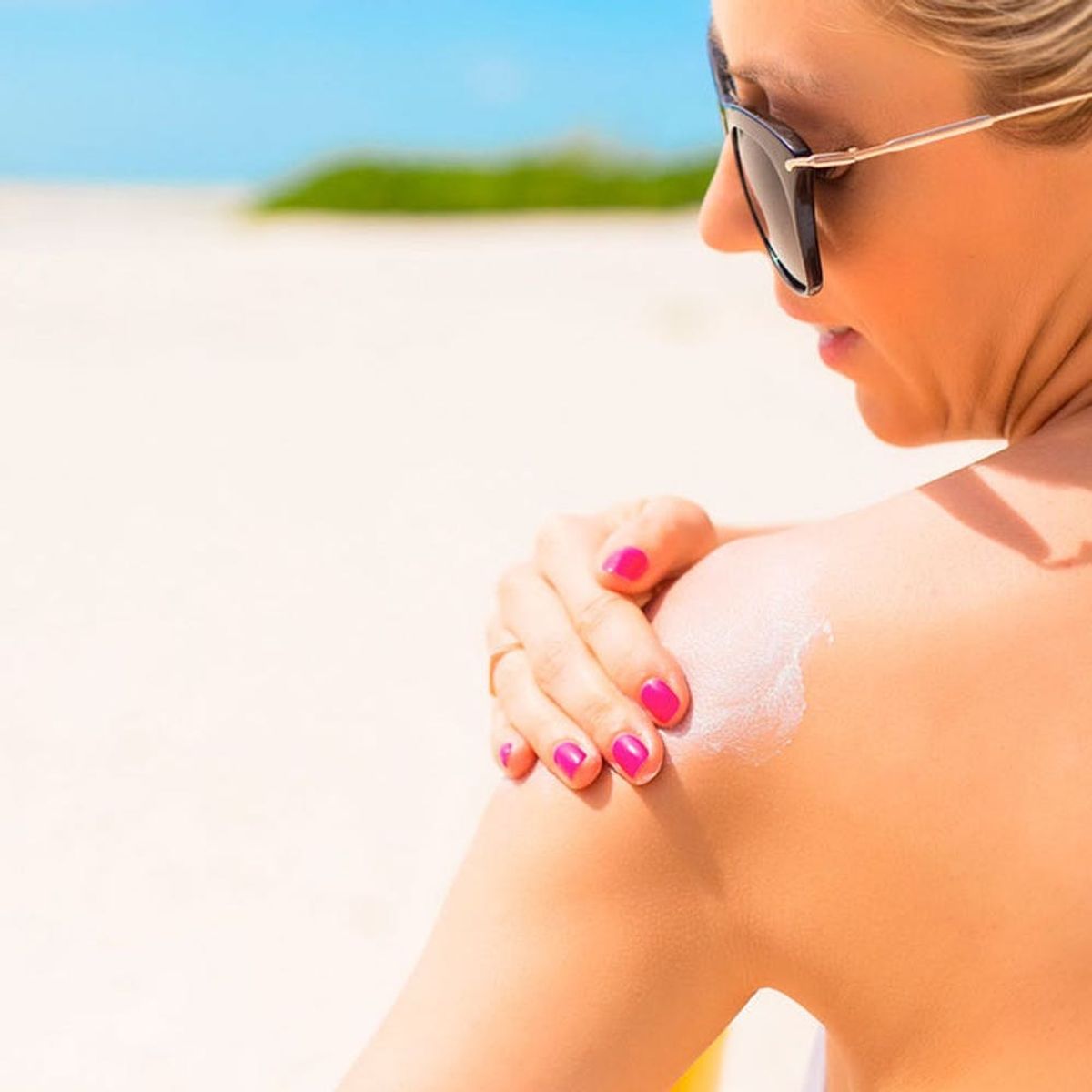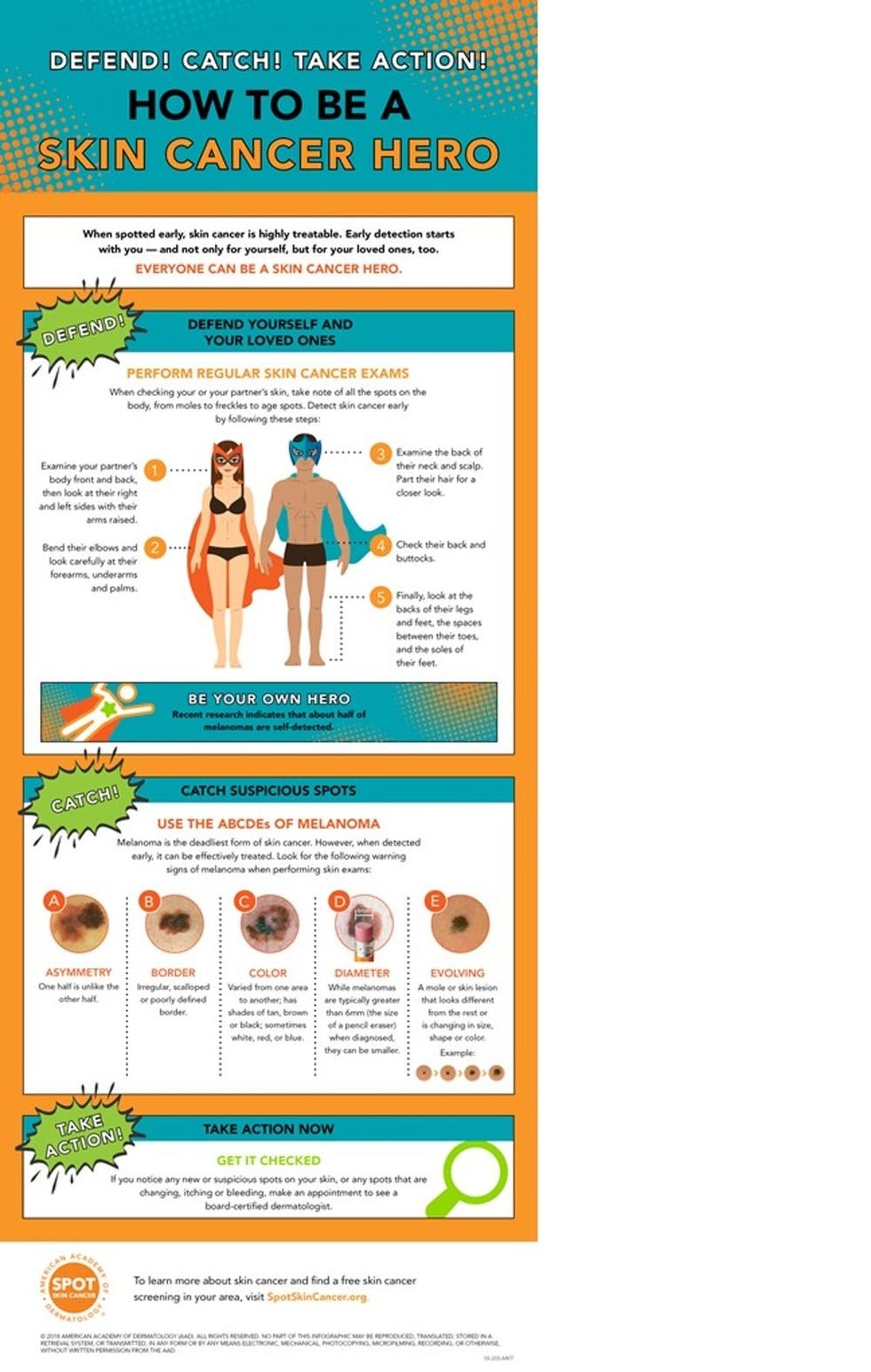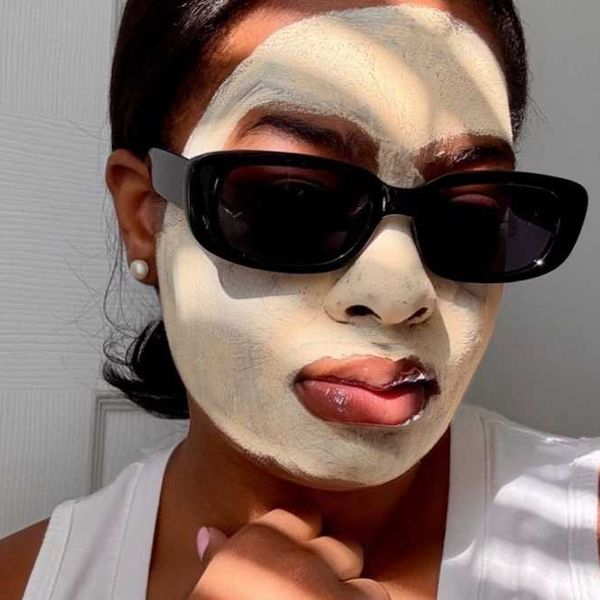It’s as easy as ABCDE.
This Skin Infographic Could Save Your Life

While we’re the first to admit that summer is our favorite season, it’s also a time when we’re on extra-high alert for UV ray exposure (although you should protect yourself 365 days a year, even on cloudy days). So yeah, of course we’re slathering on the recommended shot glass-sized portion of sunscreen, wearing protective clothing, and avoiding the sun when possible. We’re also focusing on those random moles and marks on our skin, because as the American Academy of Dermatology (AAD) reports, skin cancer is the most common cancer in the U.S. “Skin cancer is one of the few cancers you can see with the naked eye,” said board-certified dermatologist Ali Hendi, MD, FAAD, an assistant clinical professor of dermatology at Georgetown University Medical Center in Washington.

Recent research shows that half of skin cancers and pre-cancerous skin cells are found through self-exams and are highly curable if caught early, according to the American Cancer Society. So how do you know the difference between an ordinary mole and one that’s a red flag? Well, the AAD is here to help with an infographic that will turn you into a skin cancer hero, whether for yourself, your partner, or your best bud.
The chart shows how to do a self-body scan in five easy steps (you’ll need to enlist a friend to check out your backside). What you’re looking for are moles, freckles, and age spots. When you find one, use the ABCDE (that’s Asymmetry, Border, Color, Diameter, and Evolving) system to suss out whether the mark in question is a 911 or safe.
But while this graphic is a good roadmap to figuring out skin cancers, it’s not foolproof. If you’re even the teeniest bit suspicious, book an appointment with a derm. If it is indeed cause for concern, you can find out the best way to get it treated, and since some carcinogenic spots are curable when removed, it’s crucial to get it early. Not sure whom to go to? The AAD also lists free skin cancer screening centers where you can get a scan from a board-certified doc on the spot. Check out their website to find one near you. In the meantime, protect yourself (sunscreen, sunscreen, sunscreen!) and keep a watchful eye out — your spot-on screening might save your life or another life.
What are you doing to prevent skin cancers? Tweet us @BritandCo!
(Infographic via American Academy of Dermatology)















